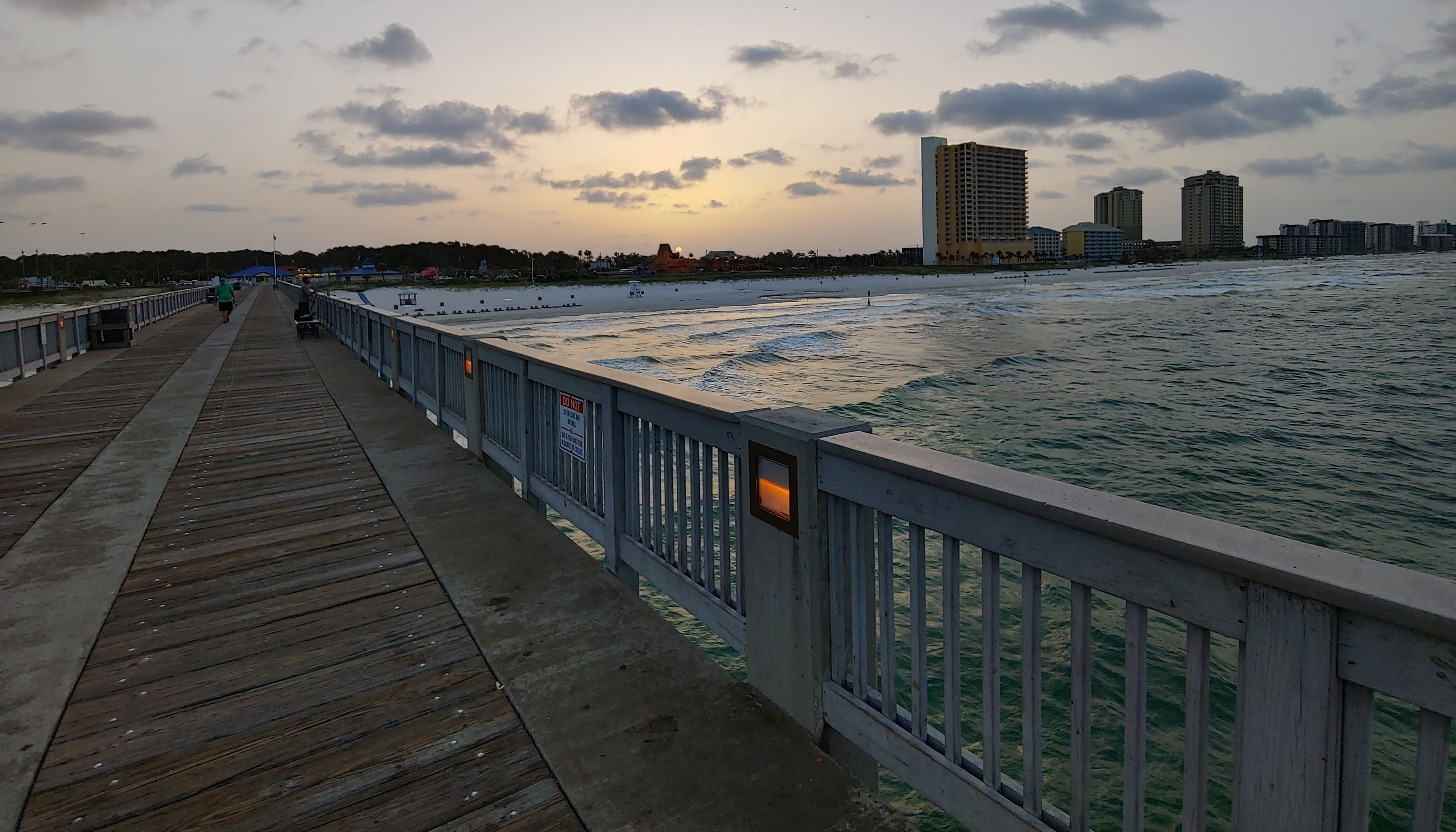Emerald Coast Pier Fishing Guide – King Mackerel
Eugene L. 03.25.22

Biology – King Mackerel (Scomberomorus cavalla)
King Mackerel are known for their reel smoking runs, mouth full of teeth, and large size. Also called Kingfish, or Kings, they are some of the most sought-after species on the Gulf Coast Piers. King Mackerel are one of the largest species targeted from the pier. They range from a small snake king from about 5lbs to large Smoker Kings that can easily reach 40+lbs. While you probably won’t run into a king mackerel this large on the piers, they are capable of reaching 93lbs and 72″ in length.
A migratory species that normally appears in the waters off of Texas to Middle Florida from April to November. Though have been known to be caught off the piers well into December. During the winter months, they migrate south to the warm waters off the Yucatan in Mexico and South Florida.
Their arrival usually follows close behind the arrival of the Spanish Mackerel. Both are chasing the migrating baitfish and squid up along the coast to the northern gulf. Even though they are related the kings have no issues eating smaller Spanish mackerel. With many smoker kings caught in the spring on flatlined 12″ Spanish mackerels.
When young king mackerel look very similar to Spanish mackerel. Kings will have brown spots on their sides when young, which will disappear with age. So make sure the mackerel you’re keeping isn’t an undersized king mackerel. You don’t want to keep a bunch of short kings on accident thinking you’ve got a limit of legal Spanish.
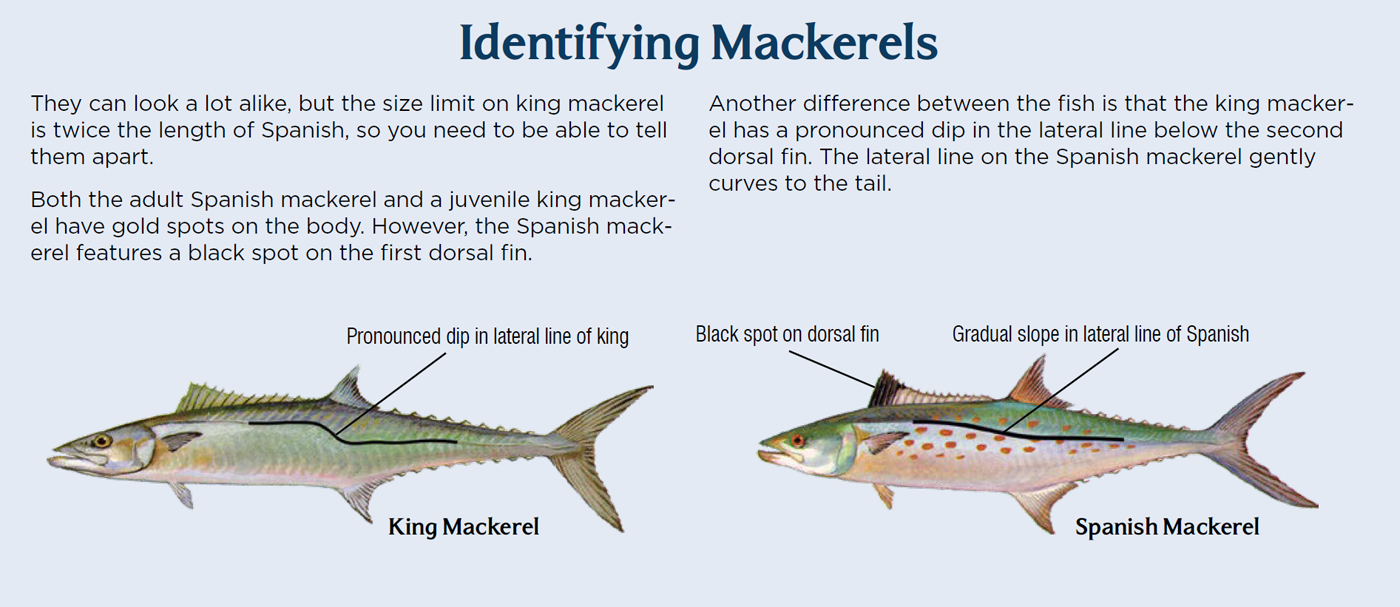
Tackle
To target king mackerel you want to have an 8-9ft long medium-heavy spinning rod with medium action in the tip. While you can go longer with the rod if you want, you don’t want to go shorter. You need the length for casting distance from the end of the pier.
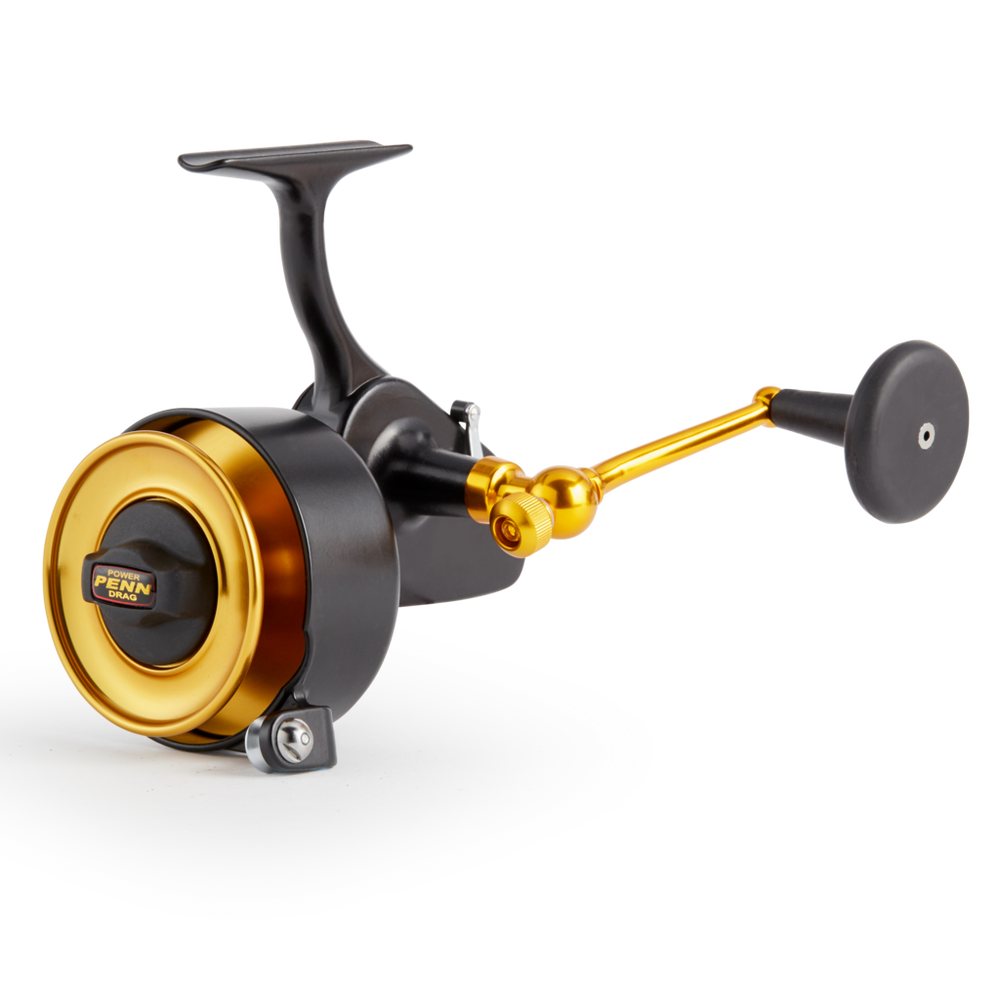
For the reel, you want something of decent quality with a smooth drag that is capable of holding 300yds of 15lb to 20lb monofilament line. Use a monofilament line, because a braided line can cut off other people’s lines when under pressure. For a reel, I fish a Penn 706z. But there are many more modern options available. The important factor here is your line capacity. Kings are capable of long fast runs. Getting spooled by a large smoker king a possibility. Drag pressure isn’t as important as having a smooth drag. Kings have soft mouths, so a jerky drag would pull the hook as well as having too heavy of a drag will pull the hook as well.
For the final part of your rig, you want to have either single or seven strand wire in the 27lb to 41lb breaking strength range. This will be your bite leader to keep the king’s sharp teeth from cutting you off. The choice between single-strand vs seven-strand is up to personal preference. Single-strand is stiffer but lower profile with the added benefit of a clean tag end that won’t cut you. But it takes more work and time to prepare a leader using a haywire twist. Seven stand wire leader is flexible and can be tied into a leader very easily and quickly. But on the downside, it can’t be straightened if kinked and the tag ends of the knots are very sharp.
A small black swivel is needed for you to attach the wire to the mainline. To the swivel tie on an 18″ length of wire at the end of which, you either attach a #2 treble hook, large casting spoon, or large casting plug.
Technique
The most popular method to target kingfish on the pier would have to be using small fish for bait. The most commonly used bait is the Cigar Minnow, either live that you caught using Sabiki rigs or dead cigs that you can buy by the 1lb or 5lb box at most tackle shops.
Either way, the rig is fairly straight forwards; a #2 treble hook attached to an 18” length of single-strand or seven-strand wire leader that’s attached to a small black swivel that you tie your mainline too. Stinger hooks can be used but most locals don’t bother with them.
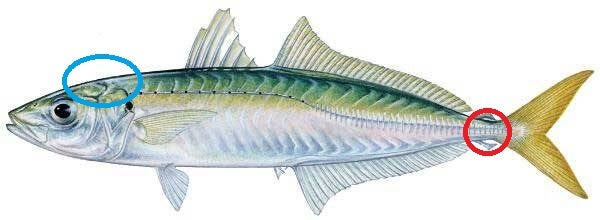
If you’re fishing live bait you cast it as far out as you can and let it swim out from the pier to hopefully get found by a hungry king mackerel. For a dead minnow, clip off the tail to cut down on drag and cast it as far out as you can into wind and current. Then let it drift down the current across the front of the pier. While it drifts make sure to take up some of the slack as it forms and twitch the bait occasionally to imitate a dying baitfish. You have to pay attention to where your bait and line is though to not tangle with the other people fishing out at the end of the pier.
The final method for targeting kings is using artificial lures, like large casting spoons and X-Rap Longcast plugs. The rigging is still the same, but this time you are usually fishing away from other people. That is to avoid casting over other people’s lines. Using lures gives you a longer reach than bait but it’s more work and you have to pay keen attention to others around you. For the spoons cast them as far out as you can, then let them sink to the bottom then reel them up almost to the surface. Keep repeating this action till you’re back to the pier. King mackerel will often hit the spoon on that long drop. For the plugs again cast out and reel it in with occasional twitching and pausing to incite a reaction strike.
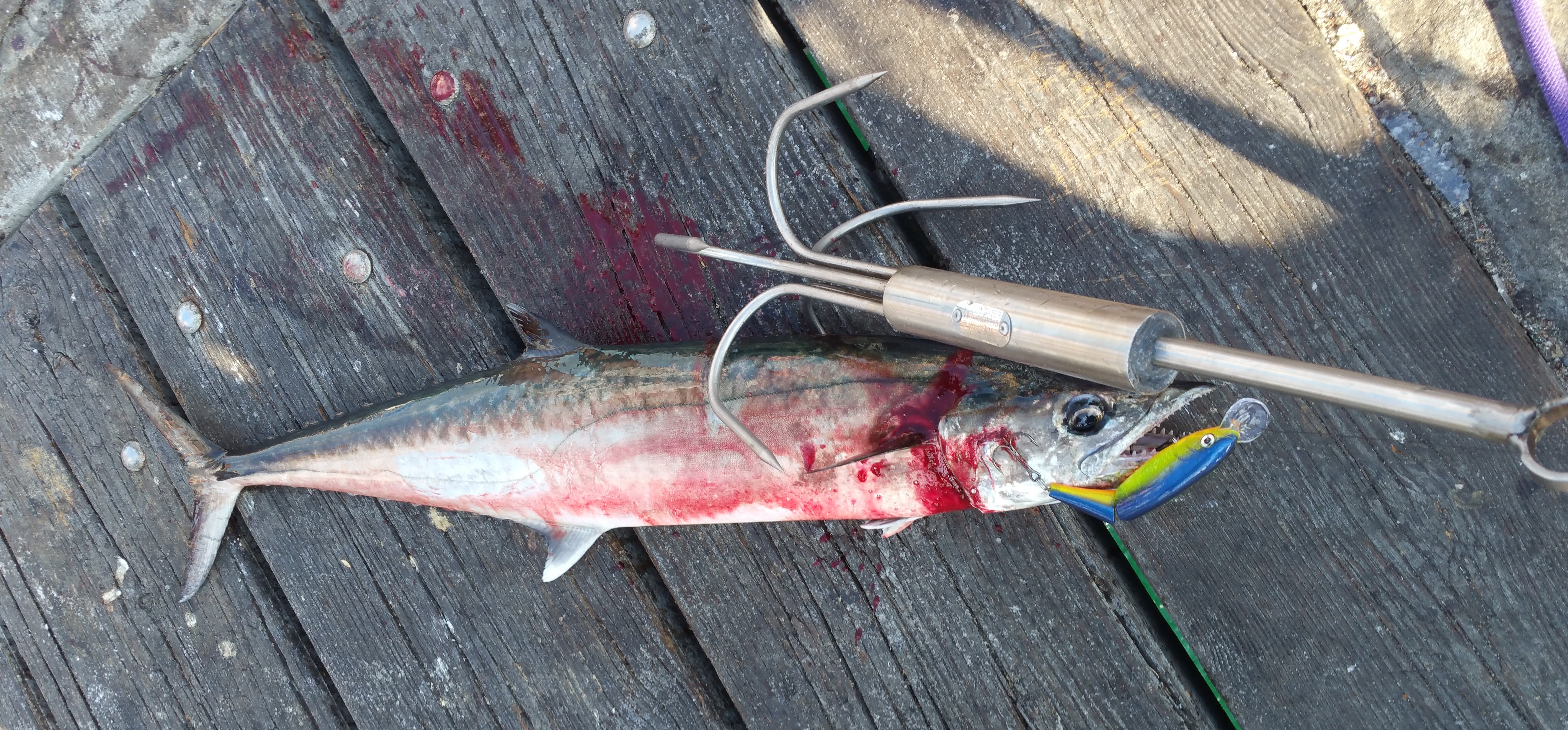
So once you’ve hooked up and fought a king to the pier. There is the topic of landing the king mackerel and getting it on top of the pier. This will require a pier gaff, wherein a large multi-tined gaff is dropped down and brought up under the king to bring it over the rail. But don’t go run out and grab one immediately, almost all the time someone will have a gaff and probably be willing to help you out. Listen to their instructions when this occurs and you will have your prize. But if by chance you lose your catch there, just keep trying. Most fish are lost at the gaff, that’s just the nature of things.
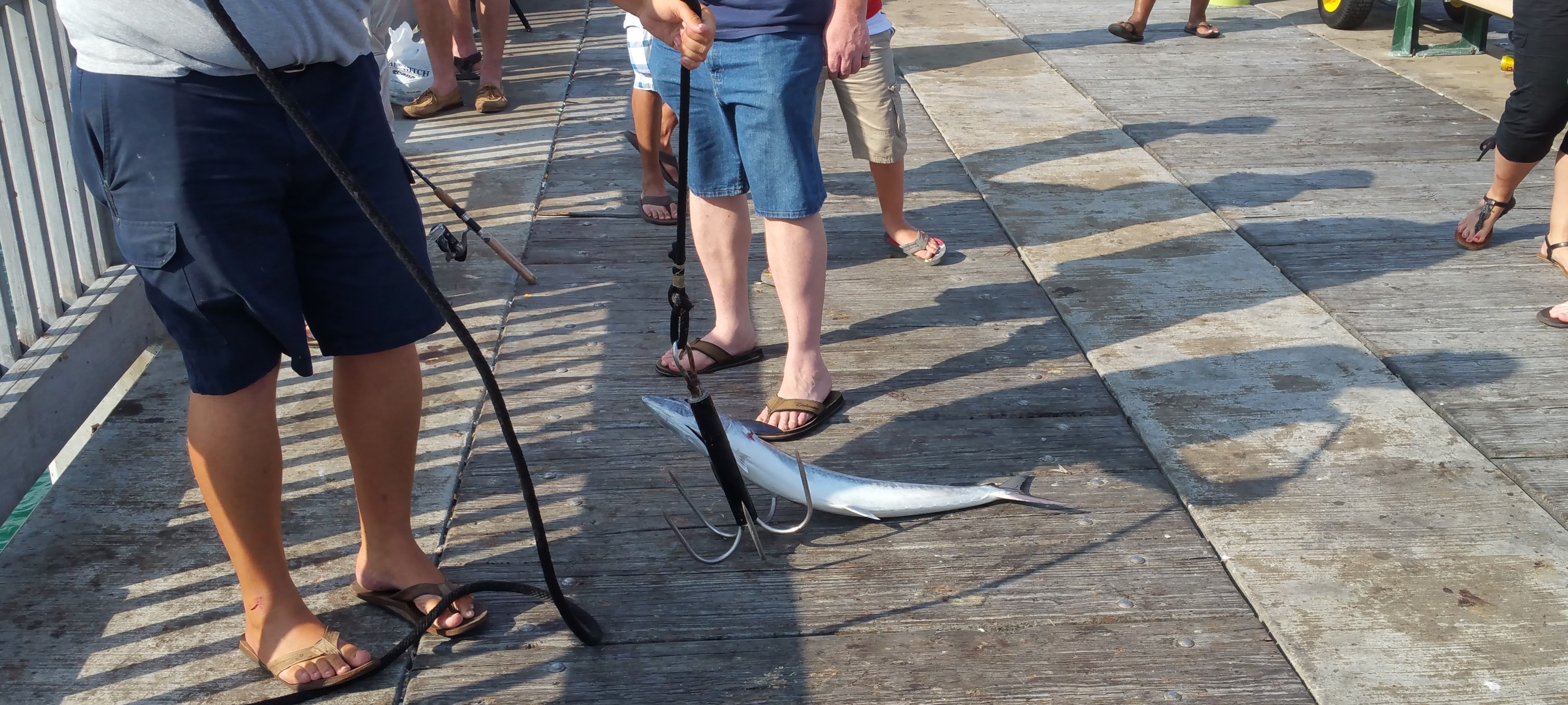
Table Fare
Kings are often looked down on as table fare, it has greyish fatty flesh that freezes poorly. People often say that it is fishy and undesirable. I feel that’s an unfair assessment. The first step of having a good fish dinner is proper care of your catch. They should be bled out, iced, and gutted rather quickly after being brought on deck. Using an ice slush with saltwater is the best way to get them cold quickly. The high-fat content of the meat causes them to develop off-flavors and go bad quickly.
The best ways to eat them would be fresh, their high-fat content makes them forgiving to most cooking methods. Excellent grilled as steaks, fried, or my personal favorite smoked. Once smoked the chunks can be broken up and made into an excellent fish dip.
Parting Words
King mackerel can be incredibly fun to fish for and catch from the pier. When the bite is hot, you will see multiple people hooked up at the same time. People running all around the rail with rods bent over. Each person trying to navigate around the others to avoid tangles and break-offs. It’s a team effort, with people clearing the rail and others gaffing fish where they can. Other times it can be hours of just staring at the emerald waters of the gulf waiting for a fish to show. Maybe a couple of people get lucky that day and catch a king.
Spring and Fall are usually the best times to target kings. Storms can also be productive with schools of mackerel getting fired up by the churning water. Though this also entails a risk that you’re carrying a 9ft long lightning rod. In the middle of a storm a quarter-mile off the beach 20ft above the surface of the water. During the Summer your best bet will be to get to the end of the pier before the sun rises. Those couple hours right before and at daybreak will usually be your best bet during the dog days of summer.
Either way, it’s fishing and there are no guarantees. Just enjoy your time on the water, pack some cold drinks, and be friendly with your neighbors on the rail. Talking to regulars and watching how they fish on the pier is hands down the best way to learn.
